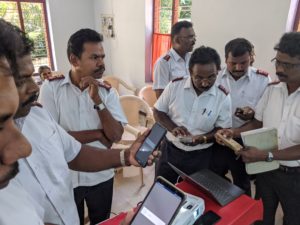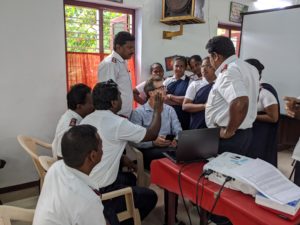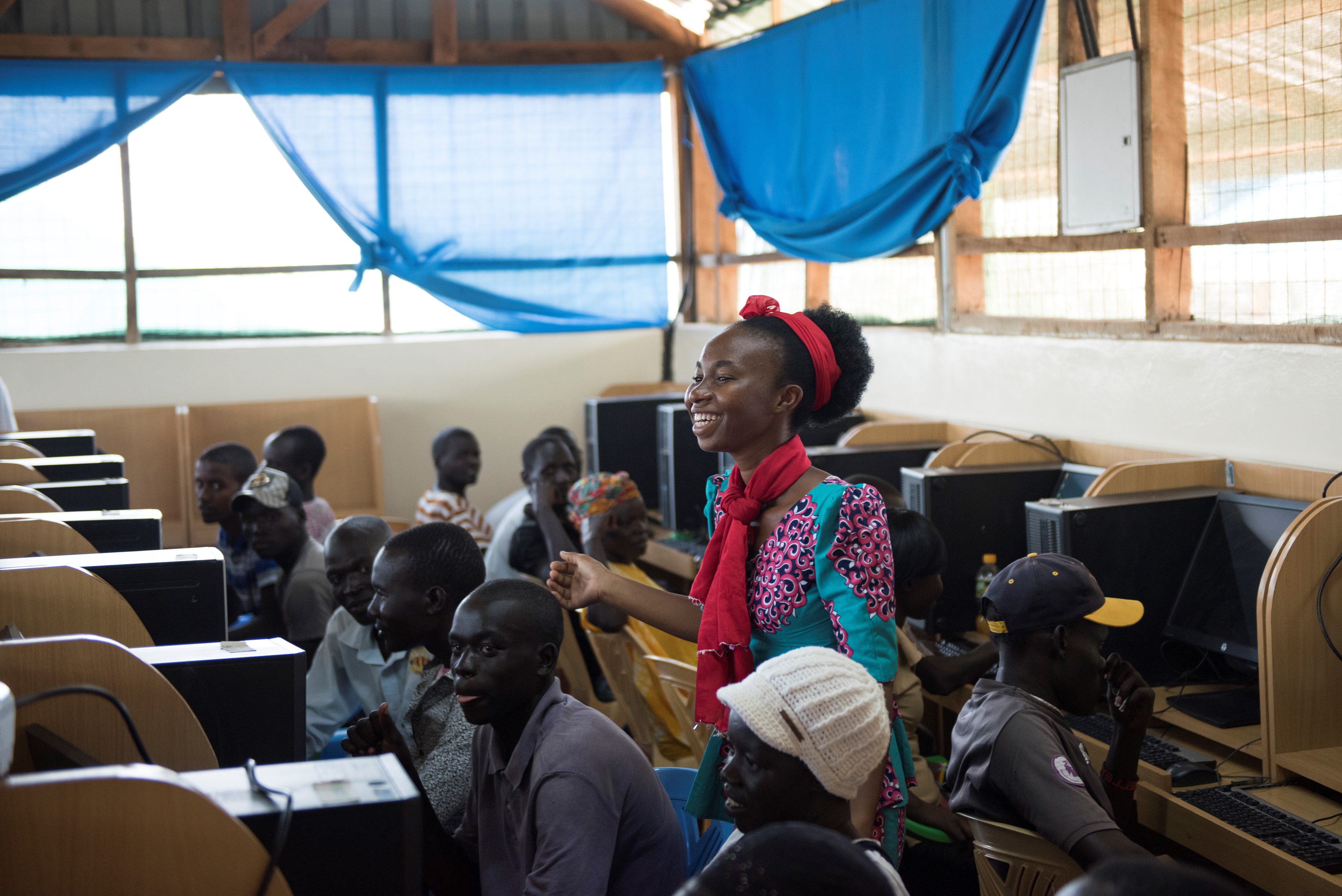
A young woman leads refugees toward independence — and shows how much technology can help
She’s lived in a refugee camp since her family fled war when she was a little girl, but Grace Nshimiyumukiza has always wanted to be the one to help, not just be helped.
First she coached her six younger siblings through classes in Kakuma, one of the world’s largest refugee camps. Then she tutored friends who were struggling in a culture that prioritized childcare and chores for girls, and later she turned inward, teaching herself basic computer skills.
Now her efforts are official: The 23-year-old is a teacher for a program aiming to help 25,000 Kakuma residents become digitally savvy. The camp, where she’s lived for 17 years, is so vast she uses a motorbike to travel around to classrooms, explaining such concepts as what a mouse is before moving on to data entry and how to operate online businesses.
“Teaching has trained me and molded me to be bold,” Nshimiyumukiza says. “My goal for my students is to see them explore and grow into leaders who will stand without fear to fight for peace and development of not just our countries of origin but also the whole of Africa.”
The program in Kakuma is a partnership between UNHCR, the United Nations Refugee Agency, and Microsoft’s Tech for Social Impact organization. The company founded the unit in 2017 as a unique model to complement its philanthropy efforts and help charities get up to speed, amid the realization that although the nonprofit sector spends about $30 billion a year on technology, it still wasn’t participating fully in the digital transformation. Efforts include measures such as training refugees or giving volunteers email addresses to grander concepts like using artificial intelligence to deal with paperwork so Salvation Army caseworkers can have more face time with people who need their help.
“We’re living in this time of amazing technology, wealth and capability, and yet there are 124 million people with life-threatening food insecurity, and the most displaced refugees than any time since World War II,” says Justin Spelhaug, who heads up Tech for Social Impact. “And nonprofits that are on the front line of serving those people have very few resources in terms of technical staff, their dollars are constrained, and solutions haven’t been built for their scenarios. So they’re a decade or more behind in using technology to help with these incredibly important issues.”
While Microsoft has been engaged with charities since 1983 with the inception of its employee giving campaign and donates $1.5 billion a year in software and services through Microsoft Philanthropies, Spelhaug says, “we realized we needed to think about a different business model to serve their needs.”
So Microsoft Philanthropies brought its donation efforts together with commercial sales and business development to create Tech for Social Impact.
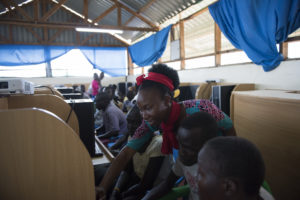
“Now here comes people who will train me on how to do it and then give me opportunity to train others,” says Grace Nshimiyumukiza. “It was like a dream come true.” (Photo by UNHCR/Hannah Maule-ffinch)
The program not only donates technology but also reinvests any profits made from discounted sales to larger charities back into the sector to help smaller ones. It gives free software to those with 10 or fewer employees, which make up 80% of the world’s 4 million nonprofit organizations. It helps nonprofits modify Microsoft software to meet their specific needs — such as fundraising and mobilizing volunteers — in part by connecting them with willing helpers in the company’s global partner ecosystem. And it offers free digital skills training.
That’s where Nshimiyumukiza (pronounced na-SHIM-ee-yoo-moo-KEE-zah) comes in.
Spelhaug recently visited Kakuma, the camp in northwestern Kenya that was built for 70,000 refugees and now hosts 190,000 from 20 countries including Rwanda, the Democratic Republic of the Congo, Burundi, Tanzania and Uganda. They live for years — even decades — in huts, some so fragile that a recent rainstorm nearly flattened the one Nshimiyumukiza lives in with her parents and siblings. Yet Spelhaug describes her as “full of optimism and hope despite the environment she lives in.”
Still, teaching herself how to use a computer, starting with how to log in and then how to create PowerPoint presentations, all while studying for her social-work diploma course, was “very hard,” Nshimiyumukiza says — so hard that it gave her an idea.
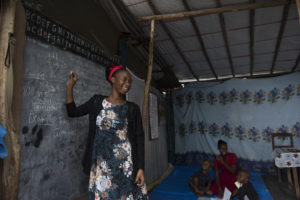
“Teaching has trained me and molded me to be bold,” says Grace Nshimiyumukiza. (Photo by UNHCR/Hannah Maule-ffinch)
“I wanted to train women in basic computer skills” to help them pursue higher education, she says. “But then it was not possible. I didn’t have all the resources. I just had the idea.”
She shared the concept with others in the camp as she went on to earn her bachelor’s and master’s degrees through online courses, and earlier this year UNHCR workers reached out to her about the Microsoft digital literacy program, which aims for half of its 25,000 intended students to be women and girls.
“Now here comes people who will train me on how to do it and then give me opportunity to train others,” Nshimiyumukiza says. “It was like a dream come true.”
Her first class was made up of 75 girls from the camp and its surrounding community. She taught them for an intense, week-long course that ran the gauntlet from learning how to turn on a computer to how to use Word, Excel and PowerPoint, along with data security. They all passed the test, stoking Nshimiyumukiza’s passion as she thought of her students potentially getting the chance to leave the camp and go on to teach others in their various home countries.
“My energy is always up, no matter how hard it seems,” she says. “Because we want to get youth and women and everybody who lives in Kakuma from a position whereby you depend, to a position where you become very independent. And they will stop relying on what they are given for free. The more you get things for yourself, the more you feel the power and the energy.”
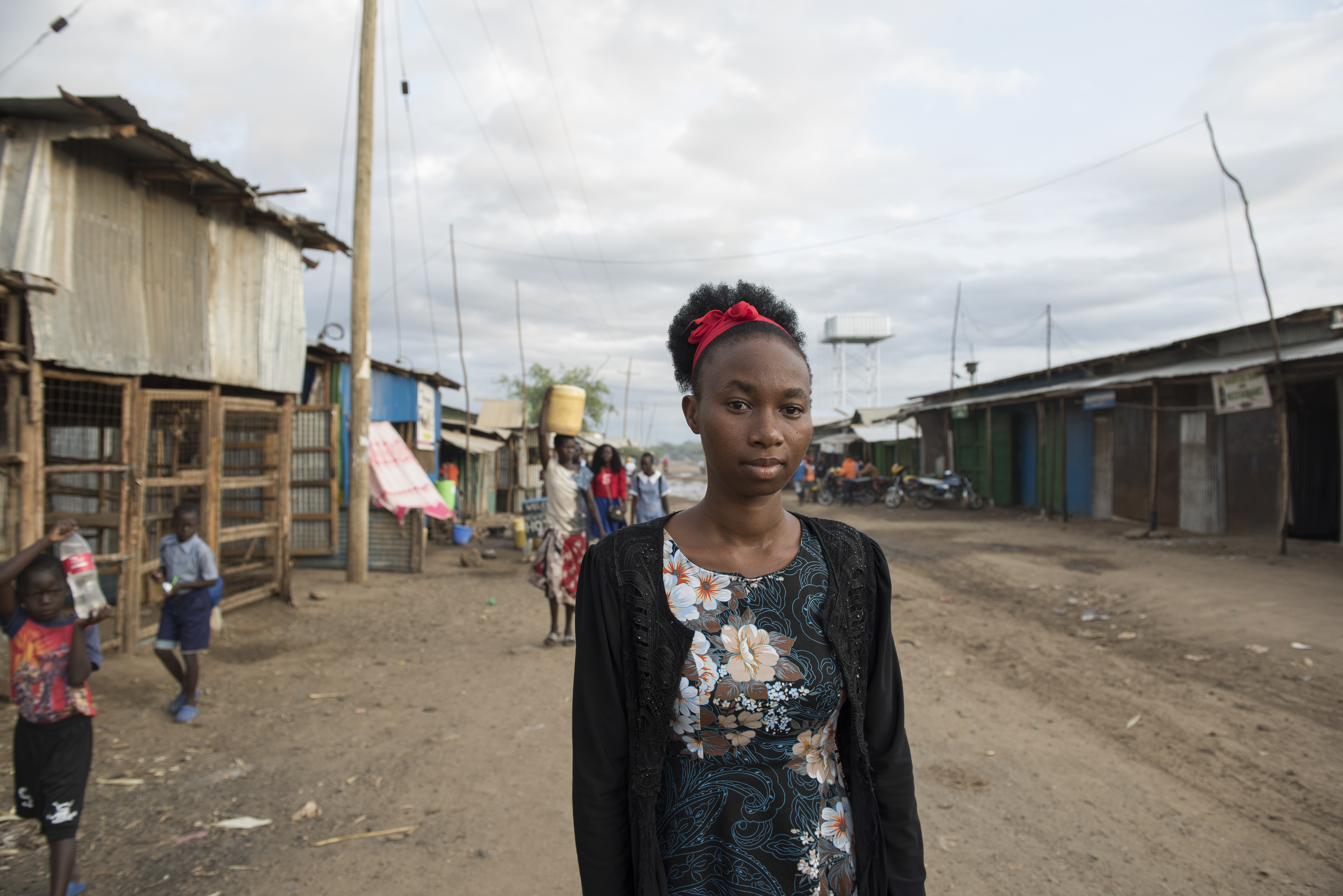
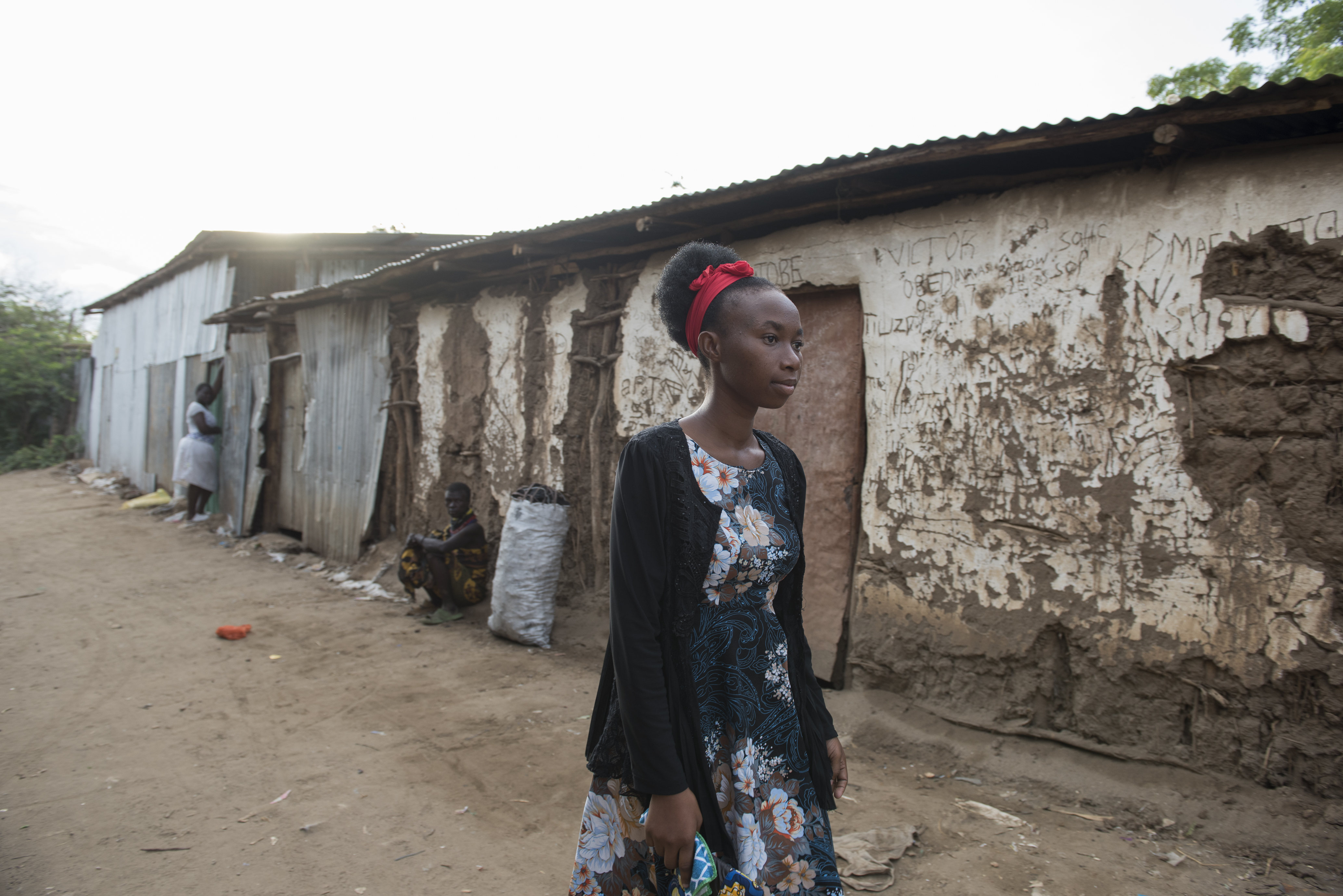
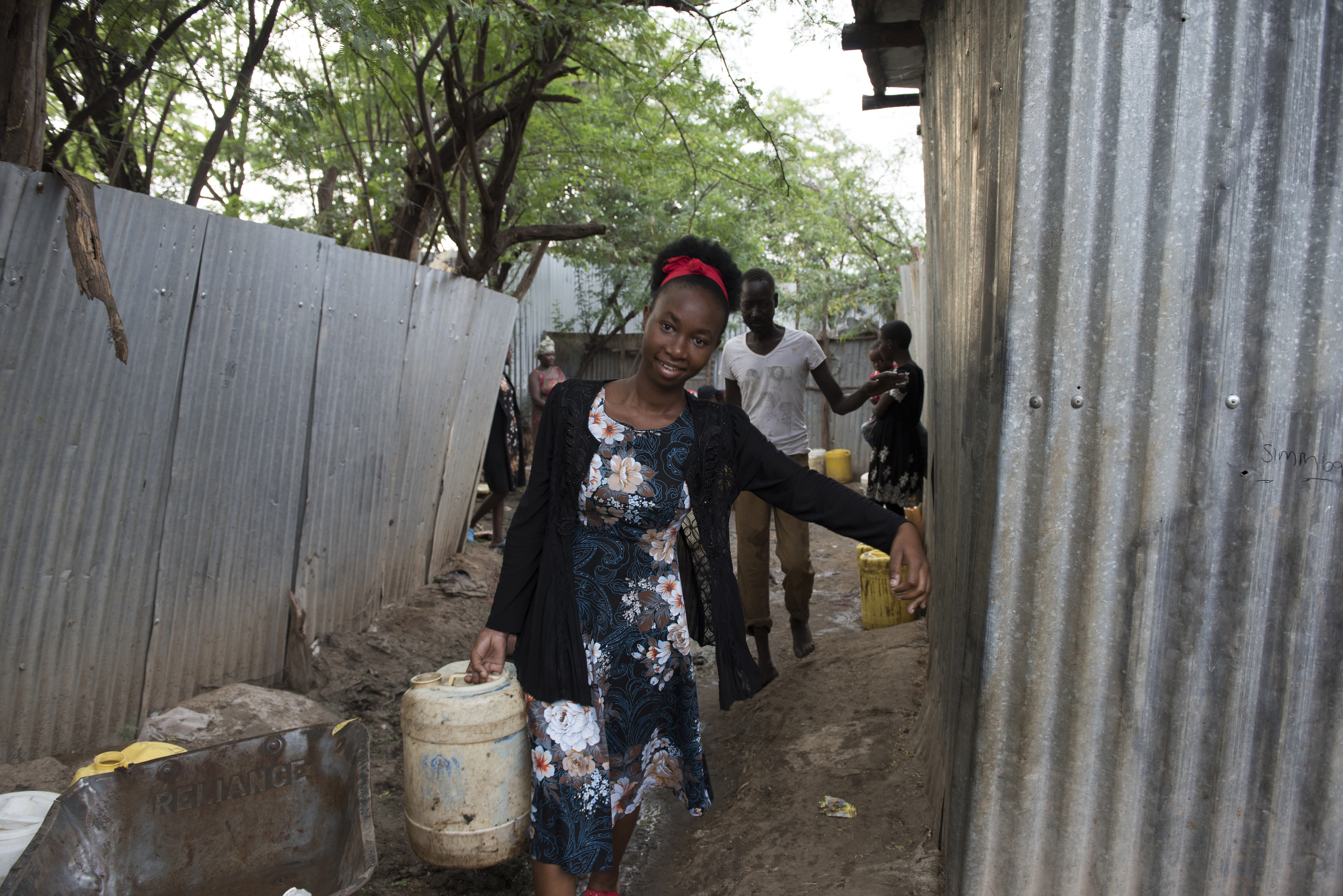

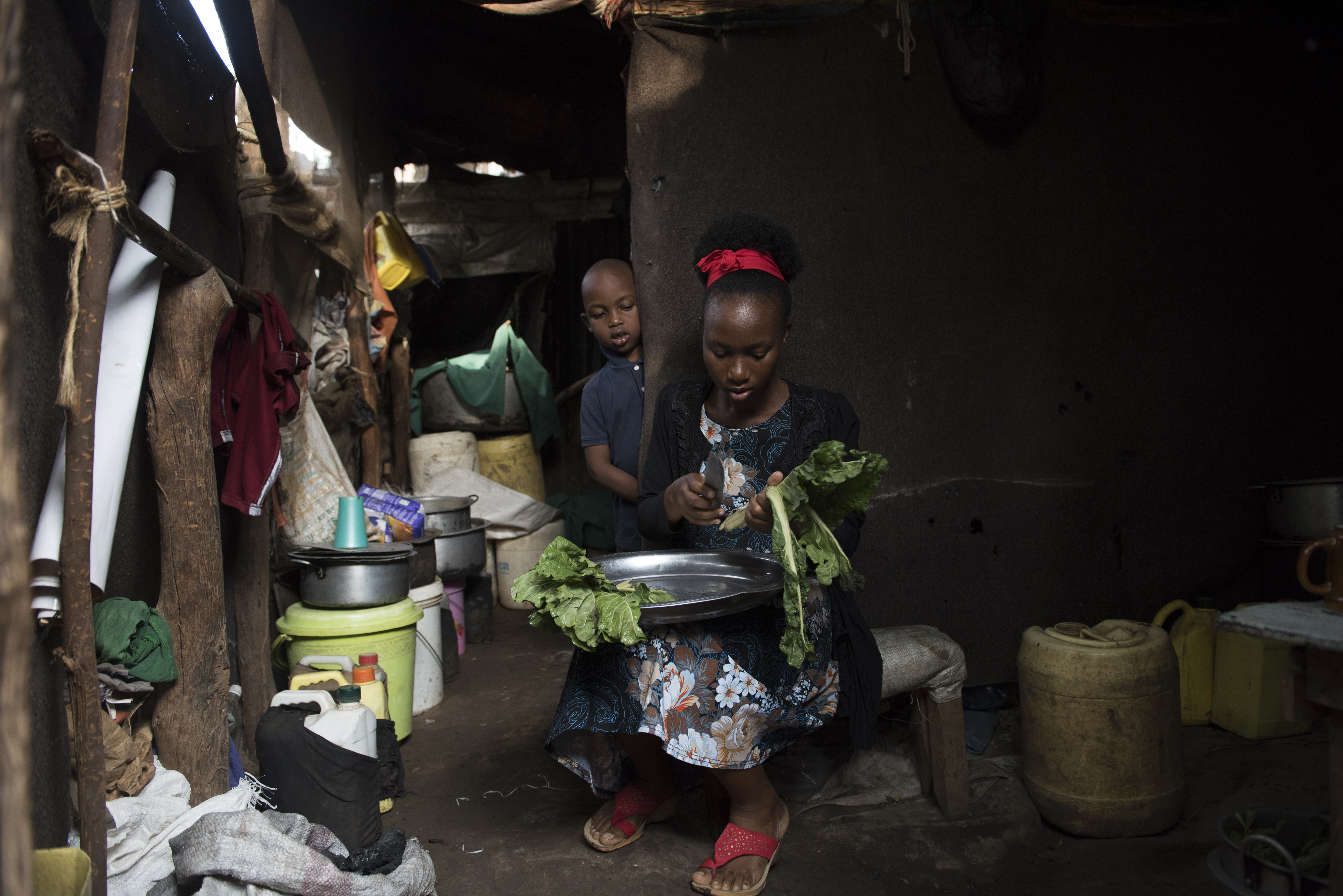

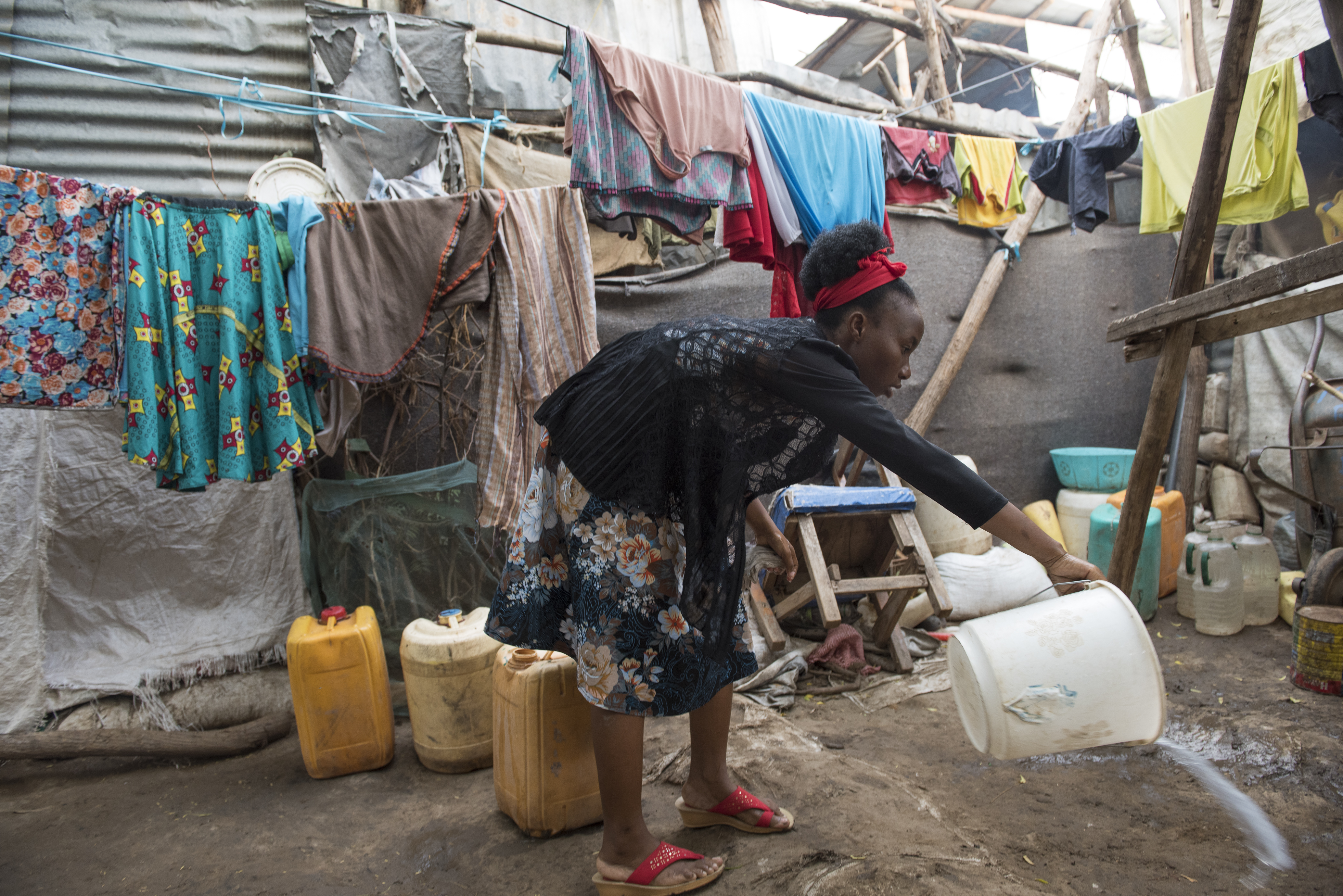
A similar energy was felt in the Salvation Army’s headquarters in India last month, when 48 officers for the nonprofit — one of the biggest and most recognized — got email addresses for the first time. With help from Tech for Social Impact, the organization is adopting Office 365 for the 64 regions it works in around the world.
“It was the first time they were being given the tools needed to communicate with each other, their divisional officer and territorial headquarters,” says Mark Bennett, a Salvation Army project manager in New Zealand who is implementing the global migration to Office 365 and was on-hand in Marthandam, India, to assist in the process. “There was much excitement and eagerness when we arrived as all 48 knew they were going to be connected. Everybody had their mobile device and was ready to get underway. Many were so keen they struggled to type their passwords.”
By the end of the day, Bennett says, he was getting Microsoft Teams messages and Outlook emails from officers who felt connected to the group’s global mission for the first time and could already see how the improved communication would help their efforts in serving the poor.
In India, concerns about cost and competency had inhibited the nonprofit’s tech adoption. Previously only 50 of the region’s nearly 1,200 employees had digital identities with the organization. Globally, the Salvation Army now aims to integrate 15,000 to 20,000 workers with Tech for Social Impact’s help in the next year or so, Bennett says, under the recognition that technology “offers us an opportunity to work in a different manner so we can spend more of the resources — people, money, time — that we have on our mission, which is meeting human need.”
A Salvation Army officer in Indonesia who was given an Office 365 account recently visited Palu, a city that’s rebuilding after being devastated last year by a volcanic eruption, earthquake and tsunami, says Dion Boyd, an IT consultant for the organization in Australia who’s responsible for the South Pacific and East Asia region.
“Others couldn’t get connected, but he was able to access everything he needed,” Boyd says. “The key is, he wasn’t focused on the technology but on working with people. The technology supported his work and didn’t distract him from it. And that’s what we want.”
That focus is also what gave Clarence White, the chief information officer for the group’s southern territory in the U.S., the idea for a virtual social worker.
White was sitting in a meeting with colleagues who all had degrees in social work or human services, discussing the Salvation Army’s Pathway of Hope program to end intergenerational poverty in the U.S. The goal when the program began in 2015 was to stabilize 100,000 families by 2030. So far it’s helped 9,000. White was the only businessperson in the room, and he didn’t understand why the goal was proving to be such a challenge until the others explained how much time a caseworker needs to spend with a family to change its trajectory — on average about a year — and how a personnel shortage was hurting the program’s reach.
“So I thought, ‘Why can’t we develop an AI therapist to do intake, pre-qualification, collecting initial data, even interacting with the clients’” to help alleviate the paperwork burden, White recalls.
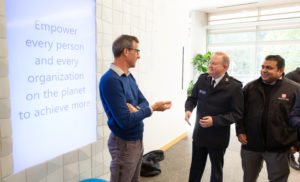
Mark Bennett, left, and other Salvation Army colleagues recently visited Microsoft’s campus in Redmond, Washington. (Photo by Scott Eklund/Red Box Pictures)
He began working with Microsoft technologists, and the group built a bot that works on both personal devices and on-site kiosks to collect all the information caseworkers need to more easily and quickly connect people in need with available services, whether they’re state, federal or private.
“Time is limited, and we can only make a certain amount of phone calls,” says Ronald Skeete, the director of Pathway of Hope for the group’s southern territory. “But with AI working behind the scenes and giving guidance in how to help someone and where to look for resources, it expands our capacity to get services to these clients.”
White is also envisioning teaching the AI to learn patterns that will help social workers see which approaches might work best in different situations, to increase the group’s effectiveness.
Clients would only have to provide their information once, White says, “and then we figure out on the back end how to make the best application based on the data. We’ll drive it by the data, rather than asking them to fill out a bunch of applications for different services and just see which one might stick.”
The Salvation Army is planning to partner with other agencies to put the working demo for the AI-driven virtual caseworker into production.
Technology offers us an opportunity to work in a different manner so we can spend more of the resources — people, money, time — that we have on our mission, which is meeting human need.
Modern workplace tools already are giving humanitarian workers more time with those they serve.
Leonard Cheshire, a U.K.-based nonprofit that supports people with disabilities around the world, began updating its technology infrastructure last year with the help of Tech for Social Impact and Microsoft partners including QuantiQ. The efforts are streamlining operations for caseworkers, nurses and other staff to help reduce the amount of time they spend on paperwork, including switching from a paper rostering system to a digital one. That makes it easier to shift staff to meet residents’ needs — from a medical requirement to a request to join a league for boccia, a game similar to bocce that was developed for people with impaired motor skills.
Other upgrades are simpler, including Wi-Fi for residents that recently allowed one to get back in touch with his long-lost relative in Australia, says Laura Crandley, Leonard Cheshire’s executive director of partnerships.
“It’s sometimes nice to remember what it is easy to take for granted,” Crandley says. “Not everyone has access to technology. And it makes a huge difference.”
All photos of Grace Nshimiyumukiza provided by UNHCR/Hannah Maule-ffinch.

